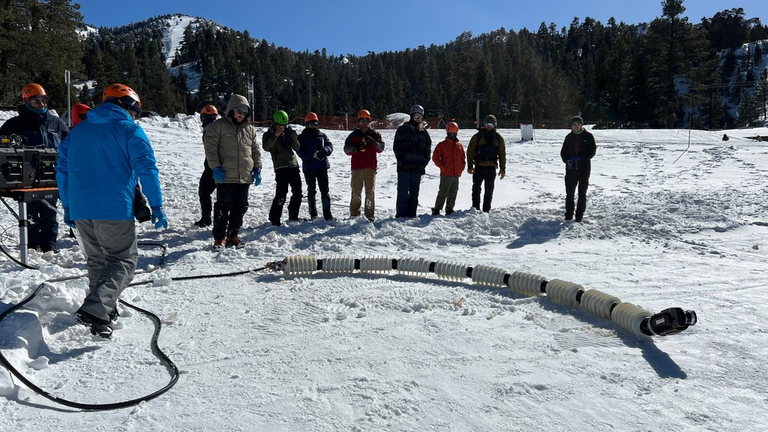The quest to discover life outside of Earth has been around for many centuries. As technology advances, new ways of exploring extraterrestrial environments and signs of life are developed. NASA has developed a snake robot to explore and navigate the icy terrain of Enceladus, the sixth-largest moon of Saturn, in search of life.

It might seem usual to have a robot with the snake form factor, but it has actually been around for decades now. Its design makes it possible for it to effectively navigate tight environments. And NASA considers it a robust form factor that's deployable to search for extraterrestrial life.
The snake robot, Exobiology Extant Life Surveyor (EELS), is 100 kilograms, 4.4 meters long, and of course, has its animal analog as a snake.
Cassini, a NASA spacecraft, has revealed that Saturn's icy moon, Enceladus, has water environments that indicate that it might possess components of life. The idea is to use EELS to explore the oceas underneath its surface to find answers to their question on life existing there.


Robots have always been the solution to exploring unknown places—places that could be difficult for humans to navigate or even hostile. And when you think of a snake and how it's able to go in and out of places, you'd consider the snake form factor to work well for extraterrestrial explorations.
EELS is equipped with LiDAR technology and four stereo camera pairs on its head that allow it to interpret its surroundings and create a 3D map of its environment. Its locomotion is designed to mimic the movement of a snake, has many degrees of freedom—allowing it to have good vantage points—and has risk-awareness software that allows it to determine the best path to navigate through.


“It has the capability to go to locations where other robots can’t go. Though some robots are better at one particular type of terrain or other, the idea for EELS is the ability to do it all,” said JPL’s Matthew Robinson, EELS project manager. “When you’re going places where you don’t know what you’ll find, you want to send a versatile, risk-aware robot that’s prepared for uncertainty – and can make decisions on its own.” Source
The team at NASA developing the robot, JPL, began working on it in 2019 with its first prototype and has continually made versions of it over time, refining its hardware and software. And, generally, EELS consists of screw threads for grip, propulsion, and grip.
To test the robot, versions of it are tested in similar environments on Earth that would simulate what it may be like for the robot on Saturn's moon, such as sandy, snowy, and icy ones.
The communication lag between Earth and Saturn will not allow for effective real-time control of the robot, so it is designed to operate autonomously by sensing, calculating, and dathering data. In the long run, it is meant to act on its own, as well as recover, without human intervention.
In its final form, the robot will contain 48 actuators—essentially little motors—that give it the flexibility to assume multiple configurations. Many of them have built-in force-torque sensing, working like skin so EELS can feel how much force it’s exerting on terrain. Source

Although Enceladus is the reason for this snake-designed robot, EELS will eventually be deployable in different places across the solar system for extraterrestrial explorations. Its robust design and build are excellent for many environments and situations.
What do you think about this snake robot by NASA? By the way, make earnings with your content on InLeo while you truly own your account. If you're new, sign up in few minutes by clicking here!
Interested in more?
Apple Vision Pro Version 2 Potential Features
Streamlined Charging for Electric Fleets by Guided Energy
Meet Figure 01: The Human-Like Robot Redefining the Future
Meet the Humane AI Pin: Voice, Gesture, AI – No Screens Needed!
The Link: Bridging Minds and Machines with Neuralink's Brain Chip
All images from JPL
Posted Using InLeo Alpha
Interesting, risk aware robot?
All these things fascinates me most times
So say they actually find a “livable” part on Saturn for survival, who are they expecting to go and stay there?
Definitely not Abena 😄
Never😂